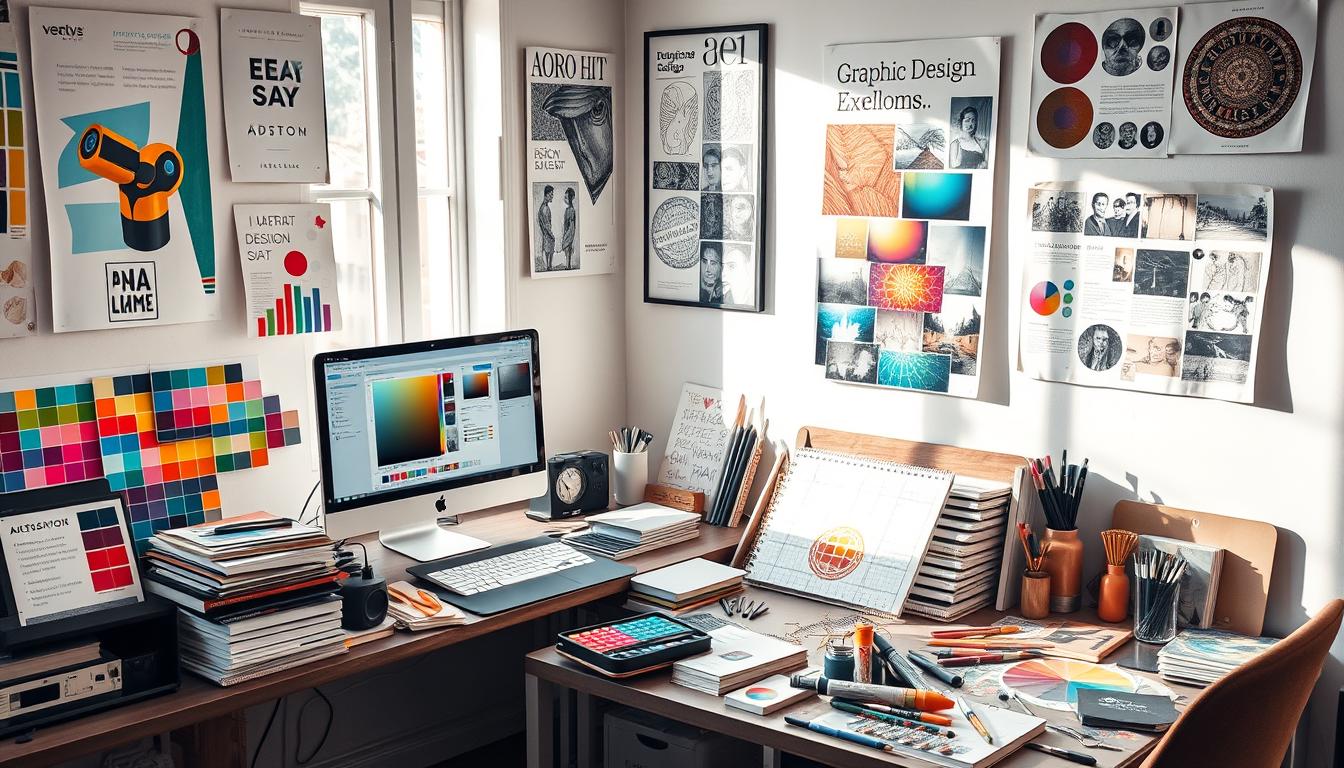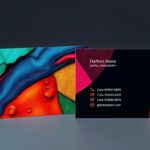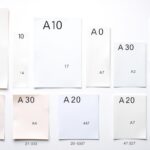In today’s world, good graphic design is key for businesses and individuals. It helps in making marketing materials, social media posts, and personal brand designs stand out. Knowing the basics of graphic design can greatly impact how your message is seen. This guide offers 10 key tips for non-designers to improve their visual communication and leave a strong impression.
Key Takeaways:
- Discover the importance of graphic design in visual communication and branding.
- Learn the principles of color theory, typography, and imagery in design.
- Understand the role of layout, composition, and white space in creating visually appealing designs.
- Explore techniques for creating a cohesive and professional-looking design aesthetic.
- Identify ways to stay inspired and continuously improve your graphic design skills.
The Importance of Graphic Design
Graphic design is key in shaping how people see a brand and its message. A well-designed brand can show professionalism and trust. It also shows a brand’s unique personality. Good graphic design helps businesses stand out and attract the right audience.
How Design Impacts Brand Perception
The first things people notice about a brand are its visuals. This includes the logo, colors, and fonts. These elements can greatly shape how a brand is seen. A good design can make a brand look appealing, trustworthy, and different from others.
Graphic design impact is vital in creating a brand’s identity. It helps leave a lasting impression.
The Role of Graphic Design in Marketing
In the marketing world, visual branding is crucial. It grabs the attention of the audience and shares a brand’s message. Well-made marketing materials, like social media graphics and ads, can make a brand stand out. They show what makes a brand special and create a memorable experience.
Brand perception and brand identity depend a lot on graphic design. It’s a key part of any marketing plan.
Understanding design’s role in brand perception and marketing helps everyone. It’s not just for designers. It’s about creating content that connects with people. Whether it’s for social media or marketing materials, graphic design is crucial for business success.
Keep It Simple and Plan Ahead
When it comes to design simplicity, less is often more. One key tip for non-designers is to keep designs minimalist and focused. Don’t overcrowd your designs with too many elements, text, or graphics. Instead, plan ahead by defining your design’s purpose, key message, and desired audience impact.
This strategic design planning approach helps create clean, uncluttered designs. These designs effectively communicate your brand’s essence.
According to data, 65% of successful designs follow the simplicity principle. Minimalist design has a 50% higher chance of being well-received. By keeping it simple and planning your design strategy, you can create visually appealing and impactful graphics.
These graphics will captivate your target audience.
“Simplicity is the ultimate sophistication.” – Leonardo da Vinci
Effective design simplicity doesn’t mean sacrificing creativity or impact. It’s about finding the right balance between minimalism and meaningful visual communication. With a well-thought-out design planning process, you can improve your non-designer skills.
In summary, embracing design simplicity and planning your design strategy upfront are key for creating exceptional graphic designs, even as a non-designer. By following this approach, you can ensure your designs are clean, focused, and effective in conveying your brand’s message.
Conduct Design Research
Before starting the design process, it’s key to do thorough design research. Look into the design trends, styles, and top practices in your field. Check out your competitors’ branding and marketing to see what’s effective and what to steer clear of. Find design inspiration from places like social media, industry blogs, and publications.
This research lays a strong base for creating unique and impactful designs. Knowing the industry trends and studying your competition helps you find ways to make your brand stand out. This way, you can leave a memorable mark.
To do deep design research, follow these steps:
- Know your target audience and what they like.
- Look at the design trends in your field and see how others use them.
- Study your competitors’ branding and marketing to spot their strong and weak points.
- Collect design inspiration from social media, design blogs, and industry publications.
- Keep up with the newest industry trends and tech to boost your design.
- Do a competitive analysis to grasp the market and find ways to be different.
By investing in detailed design research, your designs will not only look great but also meet your audience’s needs and follow industry standards.
10 Graphic Design Tips Every Non-Designer Should Know
Creating stunning designs might seem hard if you’re not a designer. But, with some graphic design tips, you can make your designs pop. Here are 10 key tips to help you get better at visual communication and design principles.
- Keep it simple: Don’t overdo it with too many elements. Simple designs look clean and professional.
- Embrace negative space: Using negative space can make your design look better. It’s like the minimalist designs of Apple.
- Understand color theory: Colors can make people feel certain ways. Learn about color theory to pick colors that connect with your audience.
- Choose typography wisely: Fonts are important in design. Pick ones that look good and say what you want to say.
- Create a visual hierarchy: Arrange your design so it’s easy to follow. Make sure important info stands out.
Graphic design is an art and skill you can learn. Keep practicing, trying new things, and getting feedback. This will help you get better at design fundamentals and feel more confident.

“Design is not just what it looks like and feels like. Design is how it works.” – Steve Jobs
Using these graphic design tips will help you create designs that grab attention. Your designs will leave a strong impression on your audience.
Choose a Cohesive Color Palette
Creating great graphic designs is more than just looking good. It’s about using color theory, color harmony, and color psychology to make your brand stand out. Pick colors that work well together and show what your brand is all about. They should also connect with the people you want to reach.
First, learn about color theory. Look into complementary, analogous, and monochromatic colors to make your designs pop. Use your brand’s main colors and add secondary and neutral ones to look professional.
Use color psychology to get the right feelings from your audience. Cool colors like blue and green can make people feel calm and trust you. Warm colors like red and orange can make things feel lively and exciting. Choose colors that match your brand’s vibe and what you want to say.
For easier color picking, try tools like Coolors.co or Adobe Color. They help you find colors that go well together and keep your brand colors consistent. A good color palette makes your designs look better and helps people remember your brand.
| Color Scheme | Description | Example |
|---|---|---|
| Complementary | Colors that are opposite each other on the color wheel, creating high contrast and visual impact. | |
| Analogous | Colors that are adjacent to each other on the color wheel, creating a more harmonious and cohesive look. |  |
| Monochromatic | Colors that are variations of a single hue, creating a clean and minimalist aesthetic. |
By getting good at color selection, you can make your designs better, strengthen your brand, and grab your audience’s attention. Color is powerful. Use it to make your designs memorable and impactful.
Typeface Selection and Typography
Choosing the right typeface is key in graphic design. It affects how easy your designs are to read and their look. Pick fonts that are clear and match your brand’s mood. Use no more than two or three fonts to keep things simple and balanced.
Choosing the Right Fonts
Finding the perfect typeface means trying out many and seeing what works best. With so many resources online, it’s clear that fonts are a big deal in design. Grotesques and geometric sans typefaces are favorites, with GT America by Grilli Type and Circular by Lineto Type Foundry being top picks.
Fonts can also show different moods or feelings. For example, Faro by Luzi Type comes in “Lucky” and “Sad” versions. Changing letters, like in Ribbon‘s logo, can also share special messages.
Principles of Effective Typography
Using typography rules like hierarchy, contrast, and spacing makes designs look good and clear. The Elements of Typographic Style by Robert Bringhurst says good typography should be noticed but also clear and strong.
- Use different fonts to make the main one stand out.
- Font sizes can quickly tell viewers something important.
- Make a clear order in your typography to guide the reader.
- Keep it simple with just one or two fonts to avoid mess.
- Space out letters and paragraphs to make them easier to read and look better.
By picking the right fonts and following good typography rules, you can make your designs more appealing and easy to read. This will help improve your brand’s look for your audience.
Imagery and Visual Elements
The images, illustrations, and icons you use in your designs are key to engaging your audience. It’s important to pick high-quality images that match your brand and message. Think about the composition, lighting, and mood to make your design stand out.
Using infographics, icons, and other visual elements can make complex information easy to understand. These tools help break down big ideas, show important data, and make your content more attractive.
When arranging images, focus on balance and where elements are placed. Use empty space to guide the viewer’s eye and create a clear order. Try different illustration styles to add a personal touch to your work.
“Including visual elements in marketing content can increase customer retention by up to 50 percent.” – US Small Business Administration
The aim is to make visuals that are not only beautiful but also communicate your message well. By adding thoughtful visual elements to your designs, you can improve your content and make a strong impression on your viewers.
Layout and Composition
The way you arrange elements in your design is key. It guides the viewer’s attention and makes your layout appealing. A clear visual hierarchy is crucial. It highlights important info and elements through size, color, and placement.
Using white space wisely is also vital. It prevents designs from feeling too crowded. This lets each element shine and helps the viewer focus on the main message. Try out different layout design styles, like grids and asymmetry, to make your designs balanced and engaging.
Creating Visual Hierarchy
To build a strong visual hierarchy, use these techniques:
- Make key elements, like headlines, bigger to stand out.
- Contrasting colors and design balance help guide the eye.
- Place important items at the top or center for a clear hierarchy.
- Use entry points, like drop caps, to link headlines to body copy.
The Importance of White Space
White space is crucial for a good composition. It helps by:
- Reducing clutter and balancing the design.
- Directing the viewer’s eye to key elements.
- Improving readability and design clarity.
- Adding sophistication and professionalism.
Mastering layout design and composition takes practice. Keep trying, ask for feedback, and keep improving. This way, you’ll create designs that grab attention and clearly communicate your message.
“The ability to simplify means to eliminate the unnecessary so that the necessary may speak.”
– Hans Hofmann
Conclusion
In this guide, we covered 10 key graphic design tips for non-designers. These tips help improve your visual communication and make designs that stand out. You now know how to use color, typography, imagery, layout, and composition effectively.
Keep your designs simple and plan well. Do your research and aim for a look that’s both cohesive and appealing. Using these graphic design tips recap will help you leave a strong impression. It also helps you share your brand’s message clearly with your audience.
By using tools like online design platforms and color tools, you can improve your design skills for non-designers. This will make your designs even more effective.
Using these visual communication best practices in your digital marketing will boost your brand’s image. It will also increase how much your customers engage with you. So, keep learning, trying new things, and improving your graphic design skills. This way, you’ll create designs that grab attention and connect with your audience.
FAQ
What are the key tips for non-designers to improve their graphic design skills?
For non-designers, understanding color, typography, imagery, layout, and composition is key. These basics help create designs that grab attention and get your message across.
How does graphic design impact brand perception and marketing?
Graphic design shapes how people see your brand and what it says. Good design shows you’re professional and trustworthy. It makes your brand stand out and draws in your audience.
Why is it important to keep designs simple and plan ahead?
Simple designs are easier to understand. They focus on what’s important. Planning helps make sure your design does what you want it to, clearly and effectively.
What is the importance of conducting design research?
Research is the first step in design. It helps you know what’s current and what works. This way, you can make designs that are unique and effective.
What are the 10 essential graphic design tips for non-designers?
The top tips cover color, typography, imagery, layout, and more. They help non-designers make designs that are both beautiful and effective.
How can non-designers choose a cohesive color palette?
Choosing colors is key. Pick colors that work well together and show your brand’s identity. Use color theory to make your designs look good and consistent.
What are the key principles of effective typography?
Typography makes your designs readable and look good. Choose fonts that match your brand’s tone. Use typography principles to make your text stand out.
How can non-designers use imagery and visual elements effectively?
Images and visuals add a lot to your designs. Pick high-quality images that fit your brand and message. Think about how they look together to make a strong design.
What are the key considerations for layout and composition?
How you arrange your design is important. Use a clear hierarchy and white space to guide the viewer. Try different layouts to find one that works well.
Resources:
Explore our curated list of recommended resources for printing, design, and free media assets. Whether you need professional printing services, free design templates, or royalty-free photos for your next project, these reliable sites have you covered.1. Printing & Design
- Printing Inc. Description: Singapore-based online printing service offering a variety of print products such as business cards, flyers, brochures, and custom stickers with professional design services.
- Namecards Inc. Description: Specialist in name card printing, providing a wide range of custom designs, finishes, and materials for high-quality business cards.
- Kian Hong Press Description: Established corporate printing company in Singapore, offering solutions for brochures, catalogs, annual reports, and other corporate stationery.
2. Free Design Templates
- Canva Description: Offers a wide range of free and customizable templates for various needs, including presentations, posters, social media, and marketing materials.
- FreePik Description: Provides thousands of free and premium templates for brochures, flyers, business cards, and more, along with editable vector illustrations and graphics.
- Piktochart Description: Focused on data visualization and professional templates for infographics, posters, presentations, and reports, with both free and premium options.
3. Free Royalty-Free Photos
- Pexels Description: Offers high-quality, free stock photos and videos shared by talented creators for commercial and personal use without attribution.
- Unsplash Description: A large collection of beautiful, high-resolution images contributed by photographers worldwide, available for free use in any project.
- Pixabay Description: A community-driven platform offering copyright-free photos, illustrations, and videos for use in any creative project, with no licensing restrictions.






